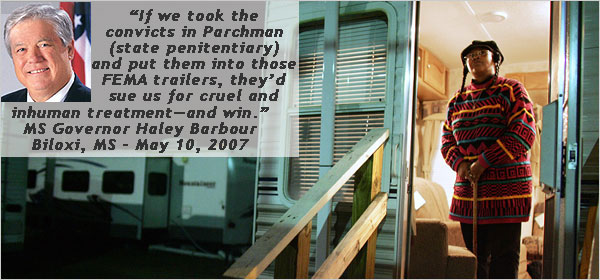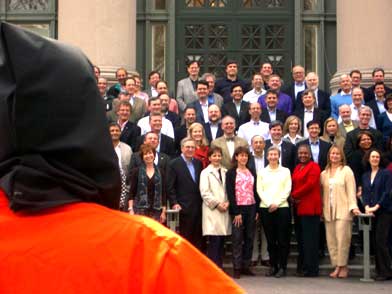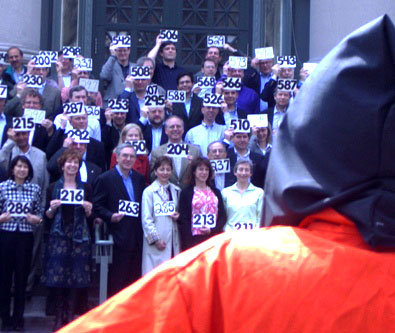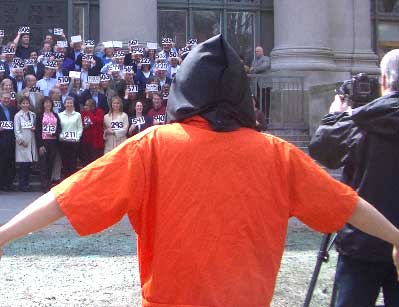I always feel guilty when I don't blog for more than a week or two, and now I've just learned that one of my favorite state legislators has put Hungry Blues on a list of blogs that her staffers are supposed to follow. What an honor, but now I feel even a little more guilty...
Anyway, the reason that I haven't been posting much, and that when I have it's largely been YouTube videos, is that I've been deep into research for an article on the 1964 murders of Henry Dee and Charles Moore in southwest Mississippi (background in Jackson Free Press and Clarion Ledger). I'm not yet on deadline for the article, but I'm also presenting on my research at Harvard Law School at the end of this month. (Local friends: my session at the conference is closed to the public. Sorry I can't invite you.)
I've blogged about the Dee-Moore case a couple of times since the indictment in January of James Ford Seale, one of the alleged perpetrators. In one post, I turned up evidence that suggests that some locals from Meadville, MS who have been critical of the mainstream press' treatment of the case are at best dishonest and at worst participants in a cover up. In the couple of weeks that followed my post, the Canadian Broadcasting Corporation and the Clarion Ledger each separately confirmed my core finding: Mary Lou Webb, publisher of the Franklin Advocate, is indeed the widow of the same man whom I found listed as Publicity Director for Americans for the Preservation of the White Race, thought by the FBI to have been a front group for the Mississippi White Knights of the Ku Klux Klan.
Webb practically gloats over the fact that the mainstream press bought the lie that James Ford Seale was dead.
Webb said Seale had been laying low for a while, and it was possible that some people might have thought he died.
“I honestly don’t think the majority of the people did,” she said.
If most people knew that Seale was just "laying low for a while," then why didn't Franklin County Sheriff James Newman assist US Attorney Dunn Lampton in his investigation and let him know that a prime suspect was available for questioning in Roxie? One also wonders why Dunn Lampton didn't bother to check the death records to confirm the false reports of Seale's death, spread by the Klansman's son. Same question about the death records should be posed to the NY Times, CBC, Clarion Ledger and all the rest.
What I found disappointing about the CBC and the Ledger's treatment of the information about David Webb was that neither acknowledged that the first report of it was by an independent blogger. My source was a document in the Mississippi State Sovereignty Commission files, available to all online. Yet the CBC referred to the document as "A document obtained by CBC News ," as if someone leaked it to them exclusively. Though the Ledger's Jerry Mitchell didn't bend over backwards to pretend he'd specially "obtained" the document on Webb, he also was silent about the earlier findings.
In a discussion thread at the Jackson Free Press, I said further that
the FBI documents referred to in the CBC and CL articles are all publicly available on the ABC News website. In other words, the only thing new that anybody did was ask Mrs. Webb for comment.
It's definitely valuable that the CBC and CL pulled more info together and published it; but I think it's a disservice to all when they mystify the nature of their information. Aside from my vein [sic] desire to have Hungry Blues quoted or cited in the mainstream news, this sort of half-truth telling about sources discourages people from thinking they can learn the truth for themselves.
While I'm mentioning my personal connection to the Clarion Ledger's (generally excellent but narrow) coverage of the James Ford Seale indictment, let me also direct you to Jerry Mitchell's recent story about white supremacists who have been rallying in support of Seale.
Reputed Klansman James Ford Seale may have drawn criticism from some, but in white supremacist circles, he's being lauded as a patriot and a prophet.
The April issue of All the Way, a white supremacist magazine in Mississippi, features Seale on its cover. His black-and-white police mug shot has been colorized, giving him blue eyes and red hair to match the flags in the background....
Richard Barrett, who produces All the Way and heads the Nationalist Movement in Mississippi, said that letter "will go down in history next to the 95 theses that Martin Luther nailed to the church door at Wittenburg in 1517 - if the onslaught of communism in our country is overcome, and that's a big if."
I've been enjoying the pleasure of getting the comments on my posts about James Ford Seale spammed with the full text of paeans to Seale by Barrett and his Nationalist cohort.
If you want to read something related to all of this that is much more interesting than what the Nationalist Movement thinks of James Ford Seale, then check out Donna Ladd's recent tour de force, "Fighting Back in Klan Nation," about the late Reverend Clyde Briggs, who was at the helm of the local African American resistance to white domination and violence in Franklin County in the 1950s and 1960s.
For something a little lighter, please enjoy the following, which was discovered in the process of attempting to appease my four-year-old's voracious appetite for YouTube videos of the Beatles.
[youtube]RFdpVsvZJ_8[/youtube]
More sooner, I hope.
UPDATE: Please see my Apology to David Ridgen















Recent Comments